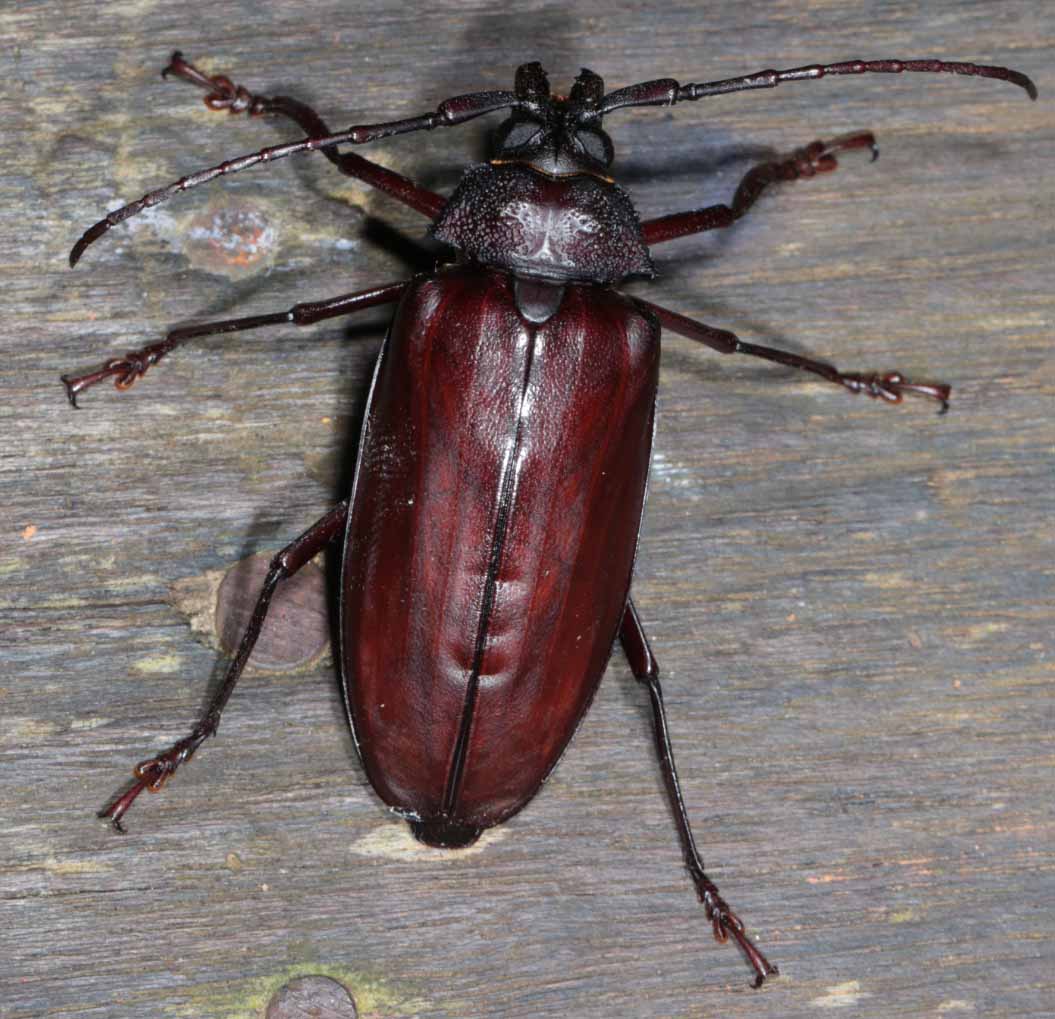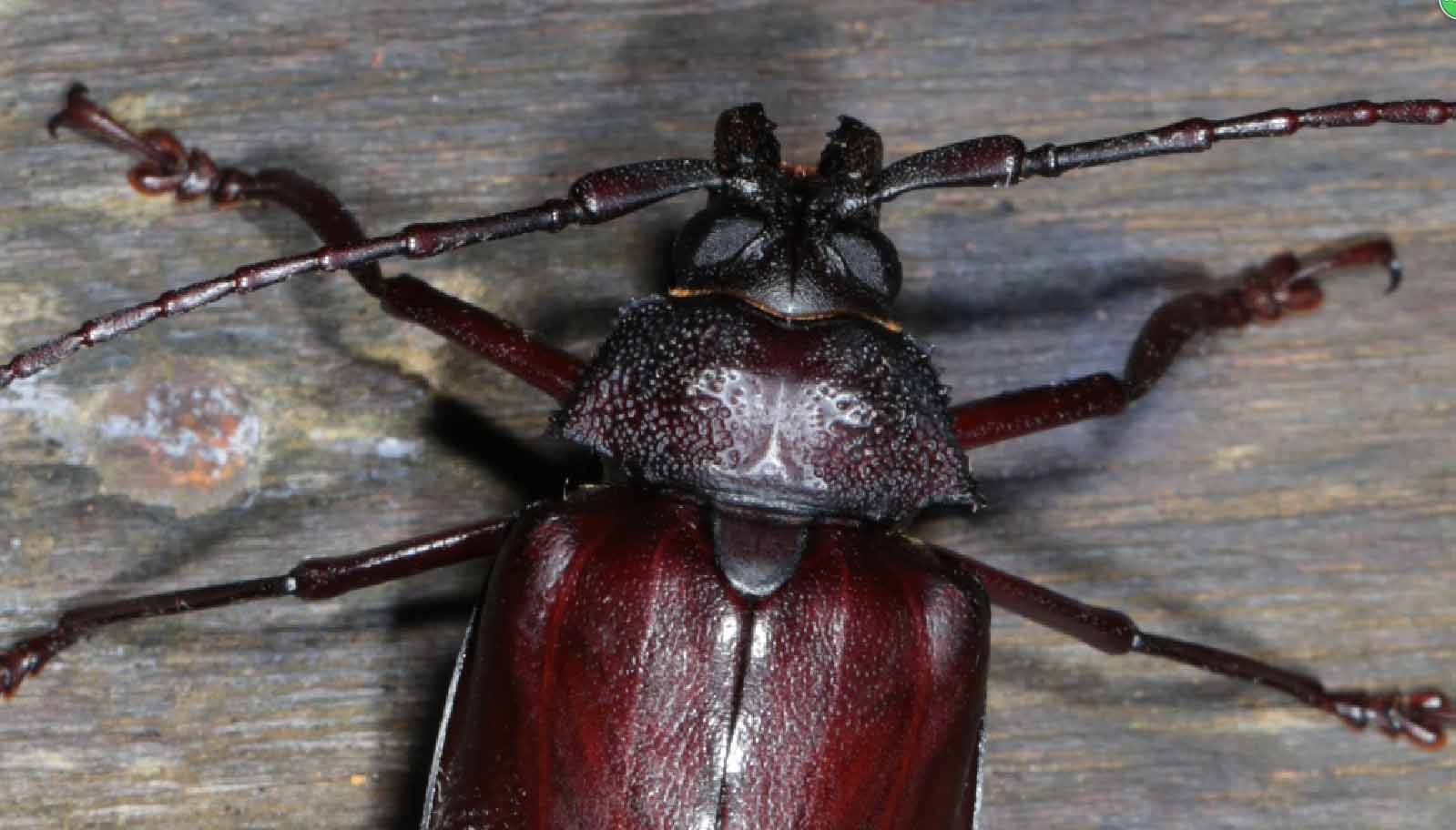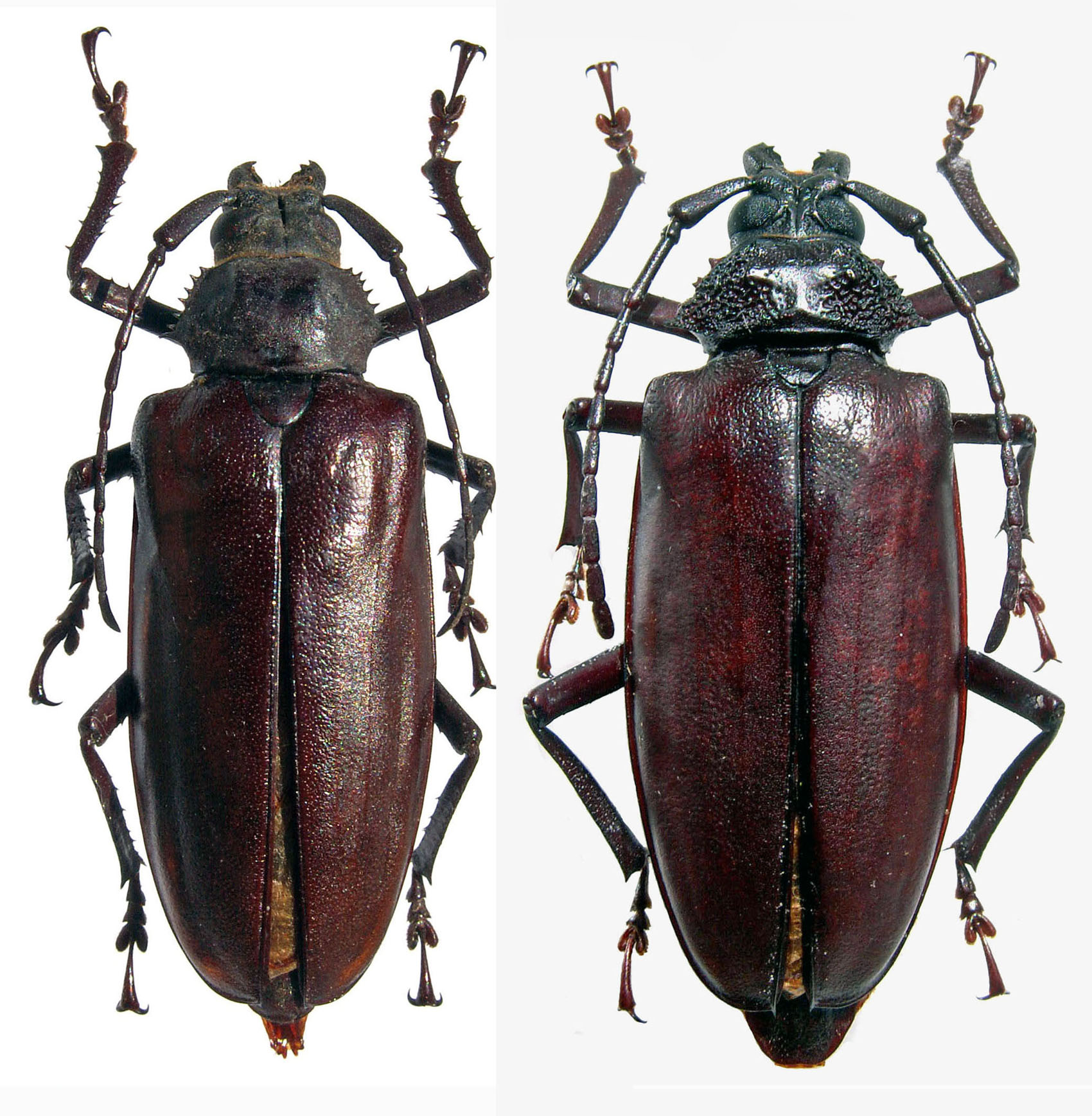| Author |
 Topic Topic  |
|
|
nasa
Member Rosalia
  
China
971 Posts |
 Posted - 17/03/2017 : 05:35:32 Posted - 17/03/2017 : 05:35:32



|

125.86 KB
From Sabah, Borneo.
Is it Paroplites ritsemai / inermis?
Thanks!
|
Edited by - Capitaine on 10/01/2021 12:03:28 |
|
|
sebastes
Member Demonax

Russia
96 Posts |
 Posted - 17/03/2017 : 14:24:03 Posted - 17/03/2017 : 14:24:03



|
| Paroplites ritsemai Lameere, 1912. Female. |
 |
|
|
Capitaine
Scientific Collaborator
   
France
1850 Posts |
 Posted - 17/03/2017 : 14:59:14 Posted - 17/03/2017 : 14:59:14



|
| Are the tibiae spiny ? if not: Paroplites inermis (Aurivillius, 1910) |
Claude |
 |
|
|
nasa
Member Rosalia
  
China
971 Posts |
 Posted - 18/03/2017 : 01:57:50 Posted - 18/03/2017 : 01:57:50



|
the tibiae are not spiny.

102.46 KB |
 |
|
|
Capitaine
Scientific Collaborator
   
France
1850 Posts |
 Posted - 18/03/2017 : 14:30:40 Posted - 18/03/2017 : 14:30:40



|
For me, P.inermis, have a look at this picture:
left : ritsemai / Sumatra
right: inermis / Borneo
> shape of pronotum, tibiae, third antennal segment....

510.42 KB |
Claude |
 |
|
|
sebastes
Member Demonax

Russia
96 Posts |
 Posted - 19/03/2017 : 03:44:22 Posted - 19/03/2017 : 03:44:22



|
For me, these two females belong to different genera.
The left one looks like Rhaphipodus sp. |
 |
|
|
Capitaine
Scientific Collaborator
   
France
1850 Posts |
 Posted - 10/01/2021 : 12:02:48 Posted - 10/01/2021 : 12:02:48



|
Following the last revision of the genus Paroplites/Cnemoplites by Komiya, Drumont & Delahaye,2021 the Nasa's specimen is a female of Paroplites oculatus Sp.nov. as well as the right specimen of my picture.
The female on the left probably does not belong to the genus Paroplites (maybe Rhaphipodus). |
Claude |
 |
|
| |
 Topic Topic  |
|


